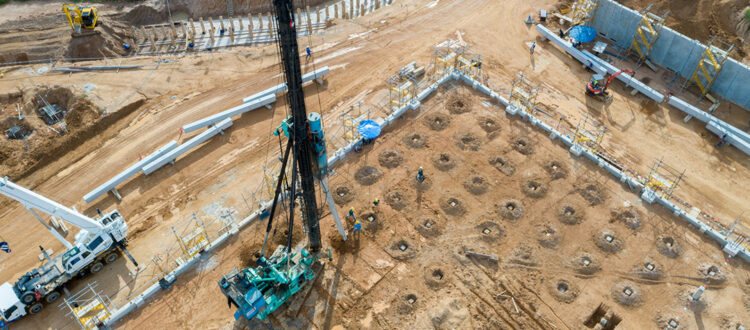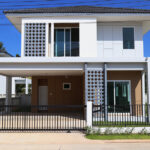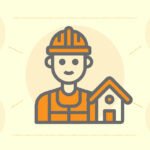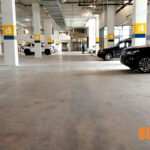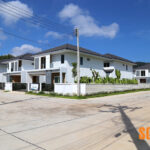Comparing Slab on Grade, Underground Footing, and Piling for Earthquake Safety in Phuket
Phuket, with its tropical climate and booming construction sector, is a prime destination for residential and commercial development. While most people associate Phuket with sandy beaches and luxurious resorts, many don’t realize the region is also susceptible to seismic activity. As a trusted construction company in Phuket, Sotech Asia understands the critical importance of selecting the right foundation system, especially in areas prone to earthquakes.
In this blog post, we explore three foundational systems commonly used in Phuket—slab-on-grade, underground footing, and piling—and evaluate their performance in earthquake-prone environments. Whether you’re a property owner, investor, or developer, understanding the differences between these foundations will help ensure your project is safe, compliant, and resilient.
Why Earthquake-Resistant Foundations Matter in Phuket
While Phuket is not on the most active seismic fault line in Thailand, it is located near the Andaman tectonic plate boundary. The devastating 2004 tsunami highlighted the potential risks associated with seismic events in the region. For any experienced Phuket contractor, designing earthquake-resistant buildings is not just best practice—it’s a necessity.
Earthquakes can cause severe structural damage, especially when the foundation is not designed to absorb or distribute seismic forces. Choosing the right foundation type depends on multiple factors, including soil conditions, building load, water table level, and budget.
1. Slab-on-Grade Foundations
What Is a Slab-on-Grade Foundation?
Slab-on-grade is a single, thick concrete slab poured directly on the ground. It’s often used for residential buildings and low-rise structures due to its cost-efficiency and quick construction time.
Pros:
- Cost-Effective: One of the most affordable foundation types.
- Quick to Construct: Requires minimal excavation and formwork.
- Minimal Labor: Less complex compared to piling or underground footings.
Cons:
- Not Ideal for Seismic Activity: Offers limited resistance to lateral forces during an earthquake.
- Limited Flexibility: Cracks can appear if the soil shifts or settles unevenly.
- Vulnerable to Flooding: If not elevated, slab-on-grade can be affected by high water tables or flooding—common in Phuket during monsoon season.
Suitability in Earthquake Zones:
While slab-on-grade foundations can be reinforced with steel rebar to improve tensile strength, they are generally less resilient in earthquakes. They don’t elevate the structure, meaning ground motion impacts the entire building directly. For a Phuket contractor working in seismically sensitive zones, slab-on-grade should only be used after thorough soil and seismic analysis.
2. Underground Footing Foundations
What Are Underground Footings?
Footings are a type of shallow foundation designed to spread the load of the structure to the soil below. These are typically made of reinforced concrete and are placed below the frost line or water table level for stability.
Pros:
- Better Load Distribution: Distributes the weight more evenly compared to slab-on-grade.
- Customizable Depth: Can be adjusted based on soil conditions.
- Moderate Earthquake Resistance: Offers improved resistance to lateral movement compared to slabs.
Cons:
- More Expensive Than Slab-on-Grade: Requires excavation, formwork, and more concrete.
- Soil Dependent: Performance varies based on soil type and moisture levels.
- Prone to Settlement: In areas with soft or unstable soil, differential settlement may occur over time.
Suitability in Earthquake Zones:
Underground footings provide moderate resistance against seismic activity, especially when reinforced with seismic design principles such as shear walls and flexible joints. A reputable construction company in Phuket like Sotech Asia would often recommend underground footings for low- to mid-rise buildings on stable soil conditions, especially where piling may not be necessary.
3. Piling Foundations
What Are Piling Foundations?
Piling involves driving long columns, made from steel, concrete, or wood, deep into the ground to support a structure. This type of deep foundation transfers the load of the building to deeper, more stable soil or rock layers.
Pros:
- Excellent Seismic Performance: Deep piles are less affected by surface soil movement.
- Versatile Soil Compatibility: Suitable for soft, loose, or waterlogged soil conditions.
- Higher Load Capacity: Can support heavy buildings and high-rise structures.
Cons:
- High Cost: Piling is more expensive than other foundation types.
- Requires Specialized Equipment: Needs skilled labor and machinery.
- Longer Construction Time: More complex process compared to shallow foundations.
Suitability in Earthquake Zones:
Piling is considered the gold standard for earthquake-resistant foundation systems, especially in regions like Phuket where soil consistency varies and the water table can be high. The deep anchorage minimizes the impact of seismic waves and lateral forces, ensuring structural integrity during and after an earthquake.
As a leading Phuket contractor, Sotech Asia regularly recommends piling for commercial buildings, beachfront villas, and high-end developments where safety and longevity are top priorities.
Comparing the Three Foundation Types
| Feature | Slab-on-Grade | Underground Footing | Piling |
|---|---|---|---|
| Cost | Low | Medium | High |
| Earthquake Resistance | Low | Moderate | High |
| Soil Suitability | Stable, dry soil | Moderate | Any type, including soft or wet |
| Construction Time | Fast | Moderate | Long |
| Load Capacity | Low to Moderate | Moderate | High |
| Flood Risk Mitigation | Low | Moderate | High |
Sotech Asia’s Expertise in Earthquake-Resistant Construction
At Sotech Asia, our approach to construction goes beyond just building. We prioritize structural integrity, longevity, and safety, especially in seismically sensitive zones like Phuket. Whether you’re constructing a boutique resort, a beachfront home, or a commercial complex, our team of engineers, architects, and project managers will help you choose the right foundation system based on in-depth soil surveys, structural load analysis, and environmental impact studies.
With years of experience as a trusted construction company in Phuket, Sotech Asia ensures that every structure is built to meet both local and international seismic design codes.
Key Takeaways
- Phuket, though known for its natural beauty, sits in a region that is seismically sensitive.
- Slab-on-grade foundations are cost-effective but offer limited earthquake protection.
- Underground footings provide better seismic resistance but depend heavily on soil conditions.
- Piling foundations offer the highest level of seismic resilience and are ideal for soft soil or high-risk zones.
- Choosing the right foundation requires a balance between budget, building type, soil conditions, and seismic risk.
- Partnering with a knowledgeable Phuket contractor like Sotech Asia ensures your building is both safe and compliant.
Thinking About Building in Phuket?
Whether you’re starting a residential project or launching a large-scale commercial development, the foundation is the most critical aspect of your build. Don’t leave it to chance.
Contact Sotech Asia, your trusted construction company in Phuket, for expert consultation, engineering solutions, and comprehensive construction services tailored to your site’s specific needs.
Contact Sotech Asia Today
📍 Office: 8/70 Moo 3, Kwang Road, Sub-district Vichit, District Muang, Phuket 83000, Thailand
📞 Phone: +66 89 996 2692
📧 Email: info@sotech-asia.com
🌐 Website: www.sotech-asia.com
Let’s build Phuket stronger, safer, and smarter—one foundation at a time.

